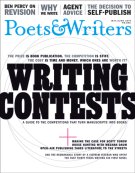Duane accepted the book, and Marlantes's deal with El León stipulated that the press would print 1,200 copies; the author's compensation would be 120 books. "I thought, ‘Boy, that's the best offer you've had in thirty-two years,'" he says, laughing. He remembers Farber telling him, "‘You don't have to change a thing if you don't want to. We'll publish it just the way it is.' But Kit would say things like, ‘Come on Karl, this is just a little tedious here.' And she was right." When it came to editing, "almost everything I did with Karl was of a more technical nature," Duane says. The two worked together to tighten the book as a whole, and to compress some sections. Duane wasn't concerned about the book's considerable length—when it landed on her desk, it ran 712 manuscript pages—which for so many other publishers might have been a deal breaker. At El León, "we don't judge books that way," she explains simply.
"We're operating with a lower burden in terms of the cost per book than New York City publishers are," Farber says. "So we have some freedom of motion that corporations don't have. But of course, it's a tightrope act." Matterhorn was scheduled to be released in May 2009, and in the lead-up Marlantes sent several of his advance copies to some independent bookstores he thought might be interested in carrying it (without the resources to print galleys, the books were part of El León's sole print run). The staff of Annie Bloom's Books, in Portland, Oregon, was enthusiastic, and asked if Marlantes would be interested in giving a reading. Someone there also told a reporter from the Oregonian about the meaty novel by a local author, and the paper ran a favorable article about him that spring. Soon after, several other bookstores asked him to come read.
In the meantime, El León had submitted the book for consideration in Barnes & Noble's Discover Great New Writers program—just as a long shot, Farber says. The book was getting great reads from the selection committee, but its members were concerned about El León's ability to meet the increased demand that would come if Matterhorn was selected for special promotion: 1,200 copies wouldn't be nearly enough to distribute for sale across Barnes & Noble's stores, and the small press simply didn't have the resources to produce a more substantial print run. So the buyers and readers employed by Barnes & Noble—including the Discover program's director, Jill Lamar, and the company's influential lead fiction buyer, Sessalee Hensley—started spreading the word about their find. It was Hensley who brought it to the attention of Morgan Entrekin, president and publisher of the venerable publishing house Grove/Atlantic. Entrekin's interest was quickly piqued.
Marlantes's original contract with El León stated that the company had every right worldwide for three years, or until the run sold out. Meeting to hash out a deal, Farber and Entrekin agreed that Grove/Atlantic would buy the entire run and pull the book from Amazon, where it had just gone on sale. They also agreed ("exceedingly generously," in Marlantes's view) to cover El León's printing costs for the book, and they offered the press a small cut of the profits. From there, Grove/Atlantic took over all aspects of the production and publicity. Farber is pleased to see El León's name on the book alongside Grove's, and when he explains that his "entertainment and travel budget last year—including the mandatory board meeting for a 501(c)(3)—was $125," it's clear that the deal eased El León's burden in ways that were vital for its survival.









